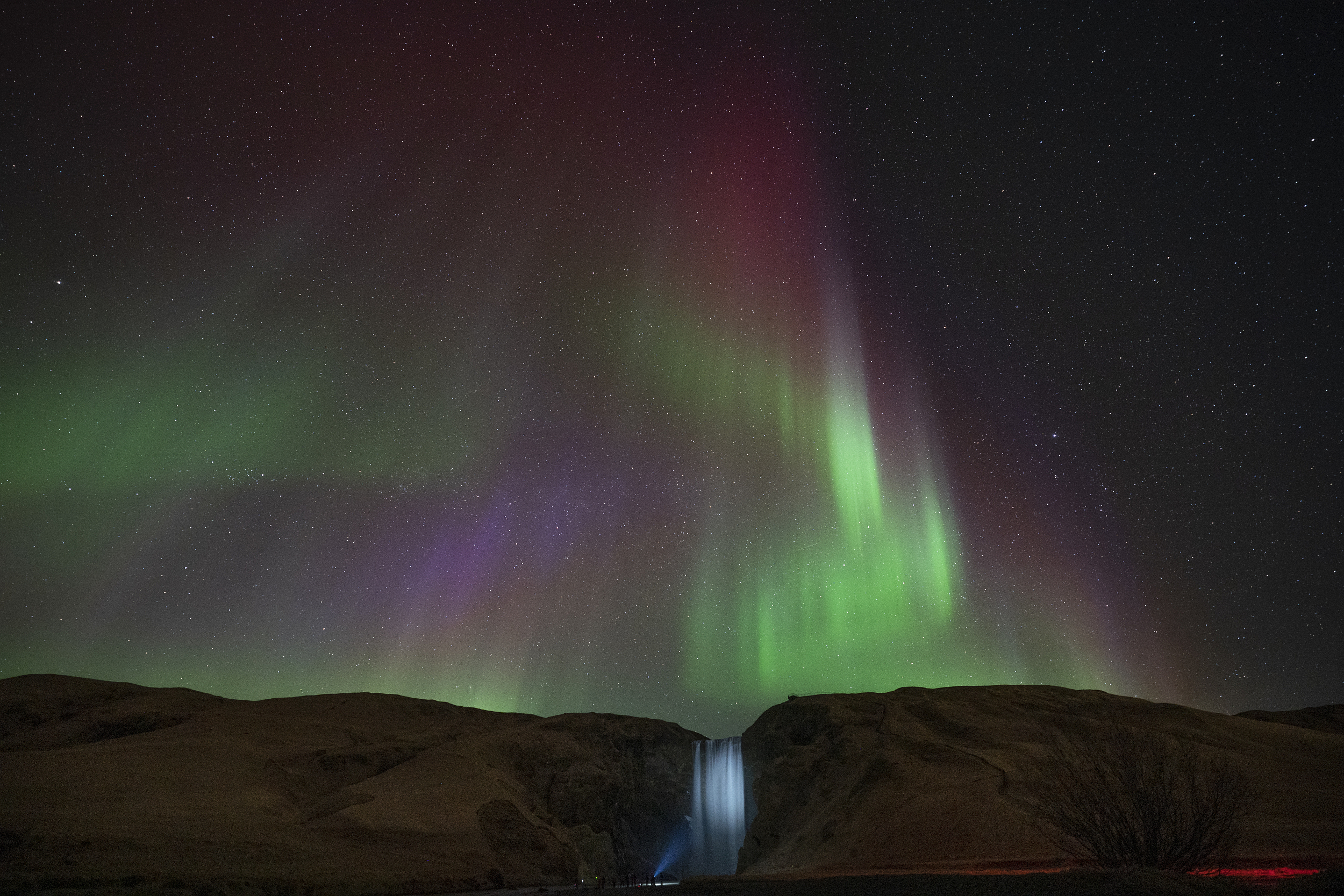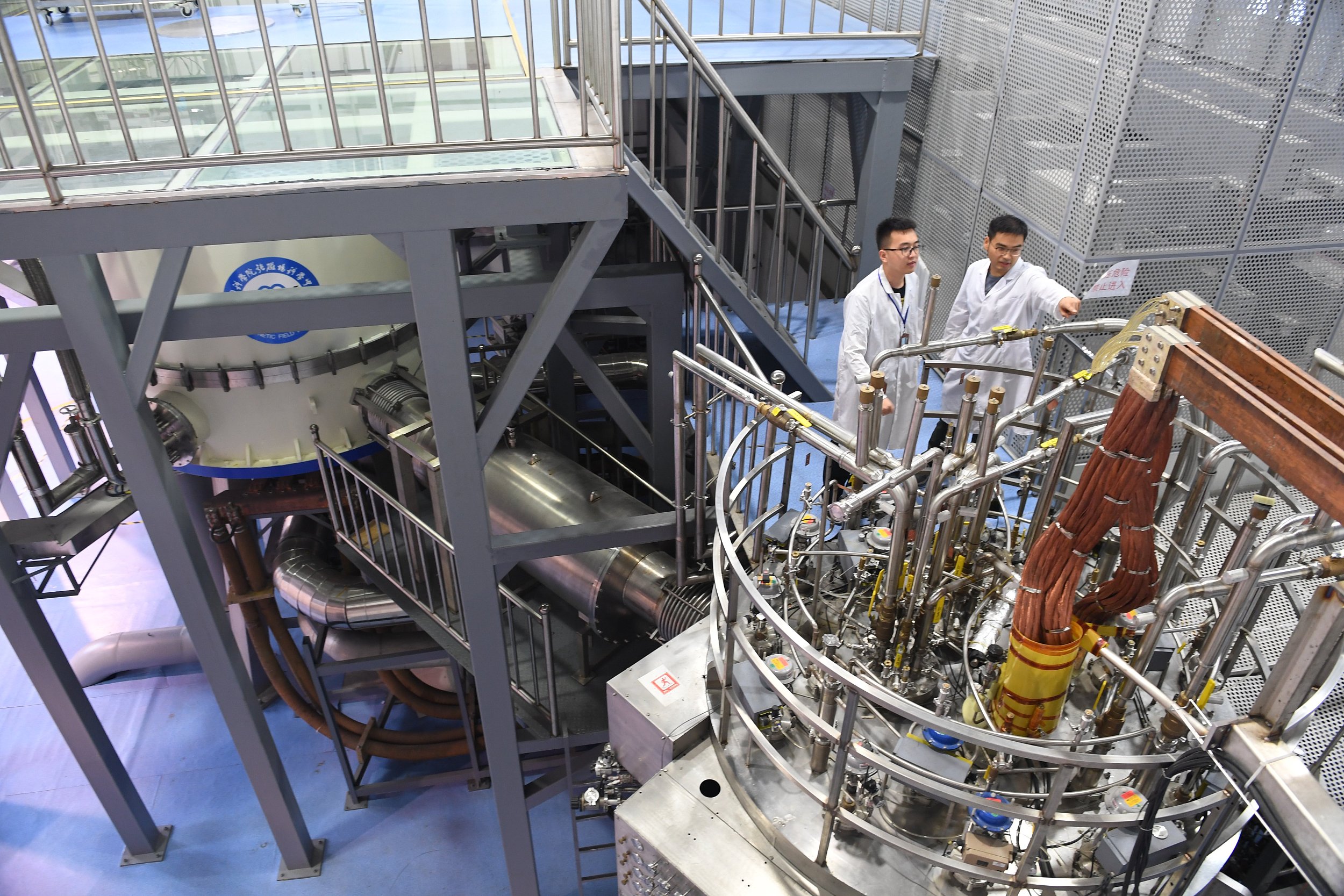Geomagnetic Storms: Threat or Visual Treat?

The aurora borealis, also known as the Northern Lights, fill the sky over Skogafoss waterfall on the Skoga River in the south of Iceland. Picture date: Sunday March 31, 2024. (PHOTO:VCG)
By Staff Reporters
The recent phenomenon of geomagnetic storms has raised public concern. What is a geomagnetic storm? How do geomagnetic storms affect people? Experts answer some of the major questions.
Geomagnetic storms are caused when the sun's coronal mass ejections with their embedded magnetic field strike Earth's magnetosphere at a high field, causing severe disturbances in the magnetic field.
Professor He Jiansen, deputy dean of the School of Earth and Space Sciences at Peking University, said, "Geomagnetic storms are essentially the effects of solar eruptions on Earth." Cyclical changes occur in the sun's magnetic field generally every 11 years. The year 2024 is in the 25th solar activity cycle. It is also the "big year" of sunspots, which will produce solar eruptions, or the release of the sun's energy.
The China Meteorological Administration (CMA) said that under the influence of geomagnetic activity, the orbital altitude of space stations may decrease due to the atmospheric drag, and positioning error of satellite navigation equipment may increase.
Cai Zheng, associate professor of the Department of Astronomy at Tsinghua University, said geomagnetic storms can affect the propagation of radio waves, interfering with ground communications and satellite signals. This can affect the accuracy of satellite navigation systems and the signal quality of mobile phones and satellite TV.
Also, strong geomagnetic storms can affect the power transmission system, increasing the current load on transmission lines and sometimes even damaging transformers or other grid equipment, causing power outages.
But there is no reason for people to worry unduly. Experts say geomagnetic storms usually have no effect on human health and interfere very little with modern, commonly used electronic communications products, though astronauts working in space stations may be more affected.
During geomagnetic storms, the charged, high-energy particles falling from space are guided into Earth's atmosphere by the geomagnetic field, and collide with the atoms in the upper atmosphere, releasing energy. This results in the phenomenon of luminescence.
Therefore, a geomagnetic storm would be a great opportunity to see the sky light up. "Although auroras are common in areas with high magnetic latitudes, if the geomagnetic storm is particularly strong, the range of aurora occurrence will also expand. Especially in 2024, which is the peak year of solar activity, it is a good opportunity to chase light," He said.


